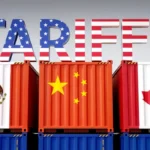Latest Posts
June 30, 2025 Tariffs: The Upside
June 30, 2025
Tariffs: The Upside
June 30, 2025
 Exploring the Role of Intrapreneurs: Innovation Drivers Within Organizations
June 30, 2025
Exploring the Role of Intrapreneurs: Innovation Drivers Within Organizations
June 30, 2025
 Mastering Productivity: A Guide to Being More Effective While Working from Home
Mastering Productivity: A Guide to Being More Effective While Working from Home
Newsletter
Sign up to receive email updates from the Freightpath.
"*" indicates required fields
Hazardous Goods and Dangerous Materials in the Global Supply Chain: Risks, Regulations, and Management
June 15, 2024
In the expansive realm of global commerce, the transportation and handling of hazardous goods and dangerous materials represent a critical yet complex component of supply chain management. These substances, ranging from flammable chemicals to radioactive materials, pose inherent risks to human health, safety, and the environment if not managed with utmost diligence and adherence to stringent regulations. In this article we investigate the multifaceted aspects of hazardous goods in the global supply chain, examining the challenges they present, regulatory frameworks governing their transportation, and best practices for their safe and efficient management.
Understanding Hazardous Goods and Dangerous Materials
Hazardous goods encompass a broad spectrum of substances that possess properties capable of causing harm to human health or the environment. These substances are classified based on their physical, chemical, and biological properties, which determine their potential hazards and the measures required for safe handling and transport. Common examples include:
- Flammable Liquids and Gases: Such as gasoline, propane, and hydrogen.
- Toxic Substances: Including pesticides, certain industrial chemicals, and radioactive materials.
- Corrosive Materials: Such as acids and alkalis that can cause severe damage upon contact.
- Explosives: Including fireworks, ammunition, and certain chemicals used in mining.
The classification of hazardous goods is crucial for regulatory compliance and determining the appropriate packaging, labeling, handling procedures, and transportation modes.
Risks Associated with Hazardous Goods in the Supply Chain
The global supply chain involves the movement of goods across vast distances, often traversing multiple jurisdictions and modes of transportation. This complexity amplifies the risks associated with hazardous goods:
- Safety Risks: Improper handling or storage of hazardous materials can lead to accidents, fires, explosions, or chemical releases, endangering personnel, communities, and the environment.
- Regulatory Compliance: Non-compliance with national and international regulations governing the transportation and handling of hazardous goods can result in fines, legal liabilities, and reputational damage for organizations.
- Environmental Impact: Spills or leaks of hazardous substances can contaminate soil, waterways, and air, causing long-term environmental damage and necessitating costly cleanup efforts.
- Supply Chain Disruption: Incidents involving hazardous materials can disrupt supply chain operations, leading to delays, inventory losses, and financial repercussions.
Regulatory Frameworks Governing Hazardous Goods
The transportation and handling of hazardous goods are subject to stringent regulations at both national and international levels. These regulations aim to ensure the safe transport of hazardous materials while minimizing risks to human health, safety, and the environment. Key regulatory frameworks include:
- United Nations Recommendations: The UN has established guidelines and model regulations (e.g., UN Model Regulations on the Transport of Dangerous Goods) that serve as the basis for national and international regulations.
- International Maritime Dangerous Goods (IMDG) Code: Regulates the transport of dangerous goods by sea, outlining packaging requirements, segregation rules, and documentation procedures.
- International Air Transport Association (IATA) Regulations: Govern the transport of dangerous goods by air, specifying packaging standards, labeling requirements, and restrictions on certain substances.
- European Agreement concerning the International Carriage of Dangerous Goods by Road (ADR): Applies within Europe and regulates the transport of dangerous goods by road, including vehicle requirements, driver training, and emergency response procedures.
- National Regulations: Each country has its own regulations governing the transport, storage, and handling of hazardous materials, which must be adhered to by organizations operating within their jurisdictions.
Challenges in Managing Hazardous Goods
Effective management of hazardous goods in the global supply chain presents numerous challenges:
- Complexity of Classification: Determining the correct classification of substances based on their properties and associated risks can be challenging, requiring specialized knowledge and expertise.
- Compliance Across Jurisdictions: Navigating and complying with diverse national and international regulations adds complexity to supply chain operations, necessitating comprehensive regulatory knowledge and proactive compliance strategies.
- Risk Assessment and Mitigation: Conducting thorough risk assessments and implementing robust risk mitigation measures are essential but resource-intensive processes.
- Emergency Preparedness: Ensuring adequate emergency response capabilities, including training personnel and establishing contingency plans, is crucial to minimizing the impact of incidents involving hazardous materials.
Best Practices for Managing Hazardous Goods
To mitigate risks and ensure compliance with regulatory requirements, organizations engaged in the transport and handling of hazardous goods should adopt best practices:
- Risk-Based Approach: Conduct comprehensive risk assessments to identify and mitigate potential hazards associated with hazardous goods.
- Training and Awareness: Provide regular training to personnel involved in the handling, storage, and transport of hazardous materials, emphasizing safety protocols and regulatory compliance.
- Packaging and Labeling: Ensure proper packaging and labeling of hazardous materials according to regulatory requirements, including the use of UN-approved packaging and hazard communication labels.
- Documentation and Record-Keeping: Maintain accurate records of hazardous goods shipments, including shipping documents, safety data sheets (SDS), and emergency response information.
- Collaboration and Communication: Foster collaboration with suppliers, carriers, and regulatory authorities to ensure alignment on safety standards, compliance requirements, and emergency response procedures.
Case Studies and Industry Initiatives
Several industries have implemented innovative approaches to enhance the safe management of hazardous goods in the supply chain:
- Chemical Industry: Implements strict safety protocols, including chemical compatibility testing, to prevent incidents during transportation and storage.
- Oil and Gas Sector: Emphasizes the use of advanced technology for real-time monitoring of hazardous materials during transportation, enhancing operational safety and efficiency.
- Logistics and Transportation Providers: Invest in specialized training programs and technology solutions to improve the handling and tracking of hazardous goods across global supply chains.
Conclusion
Hazardous goods and dangerous materials constitute a critical yet challenging aspect of global supply chain management. Effective management requires adherence to stringent regulatory frameworks, comprehensive risk assessments, and robust mitigation strategies. By prioritizing safety, compliance, and proactive risk management, organizations can navigate the complexities associated with hazardous goods while safeguarding personnel, communities, and the environment. Embracing best practices and leveraging technological advancements will continue to play a pivotal role in enhancing the safety, efficiency, and sustainability of global supply chain operations involving hazardous materials.
CEO @ FreightPath Inc. | CSCMP Corporate Member | We Deploy The Industry’s Most Comprehensive Global Supply Chain Curriculum | 500+ Course Library | gofreightpath.com/course-catalog
